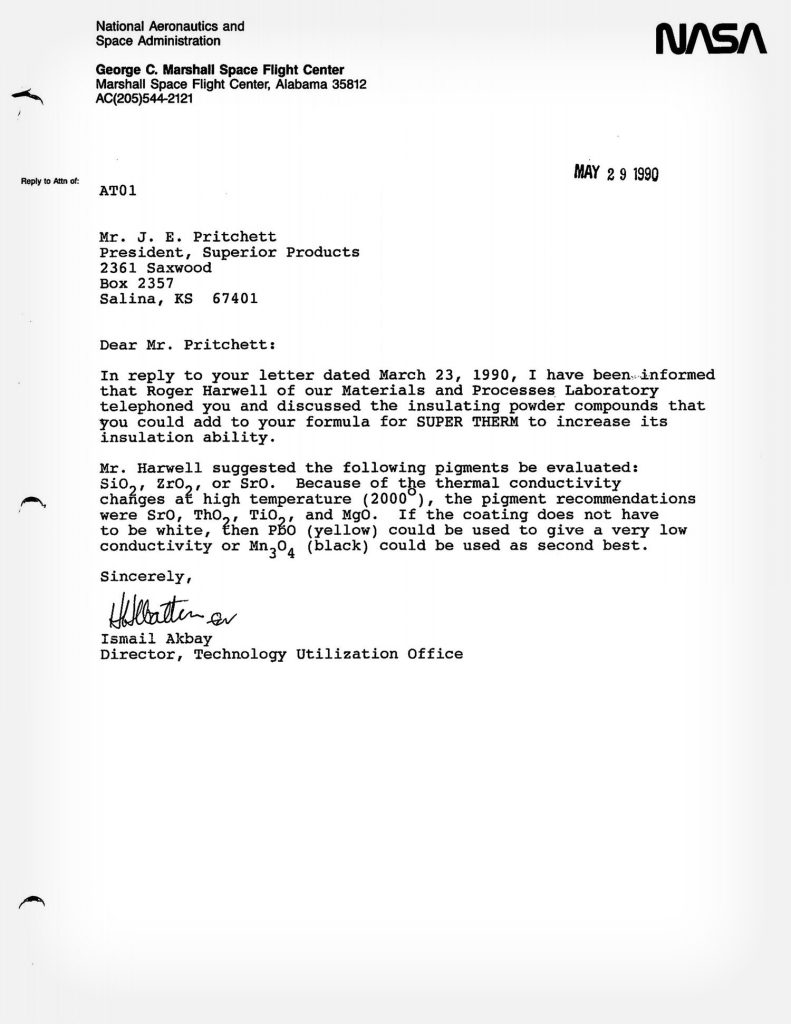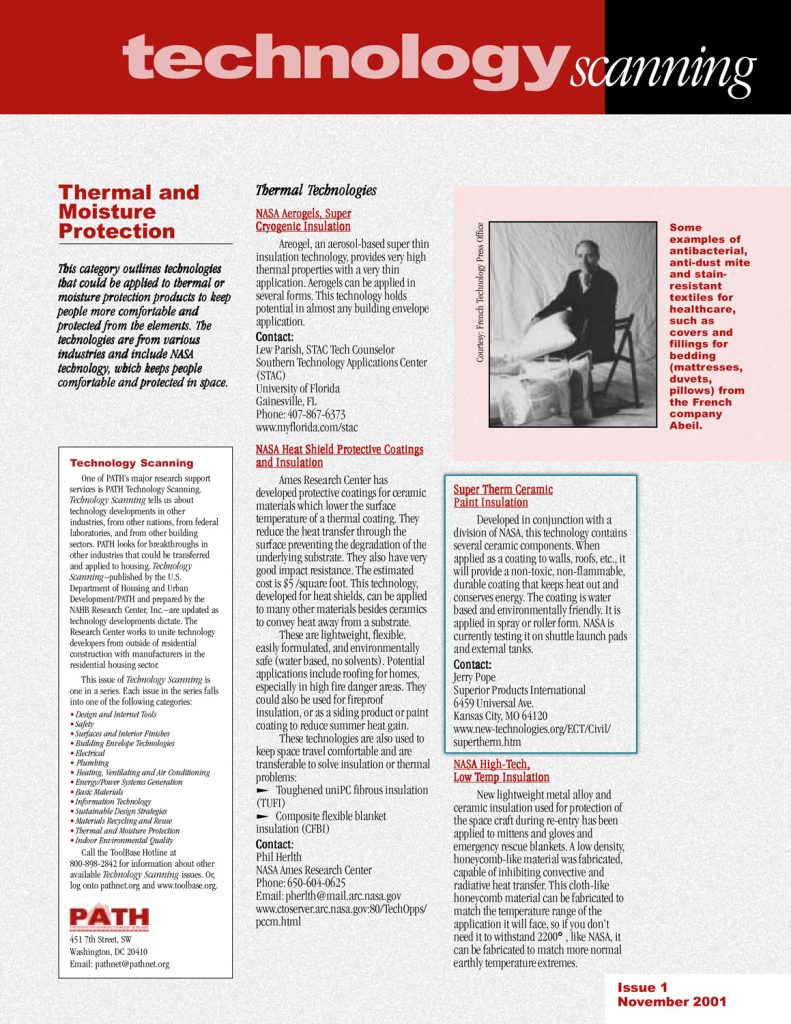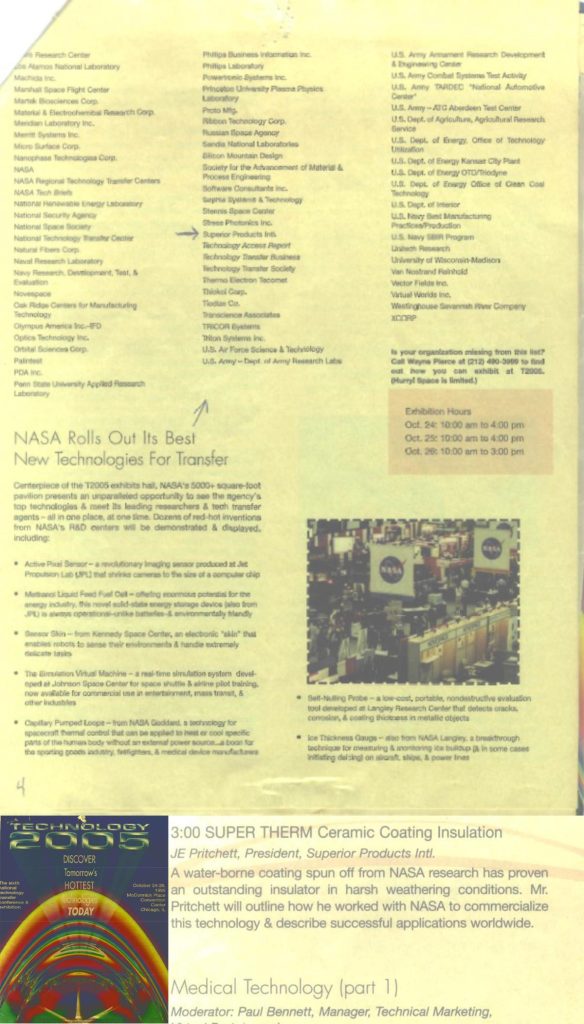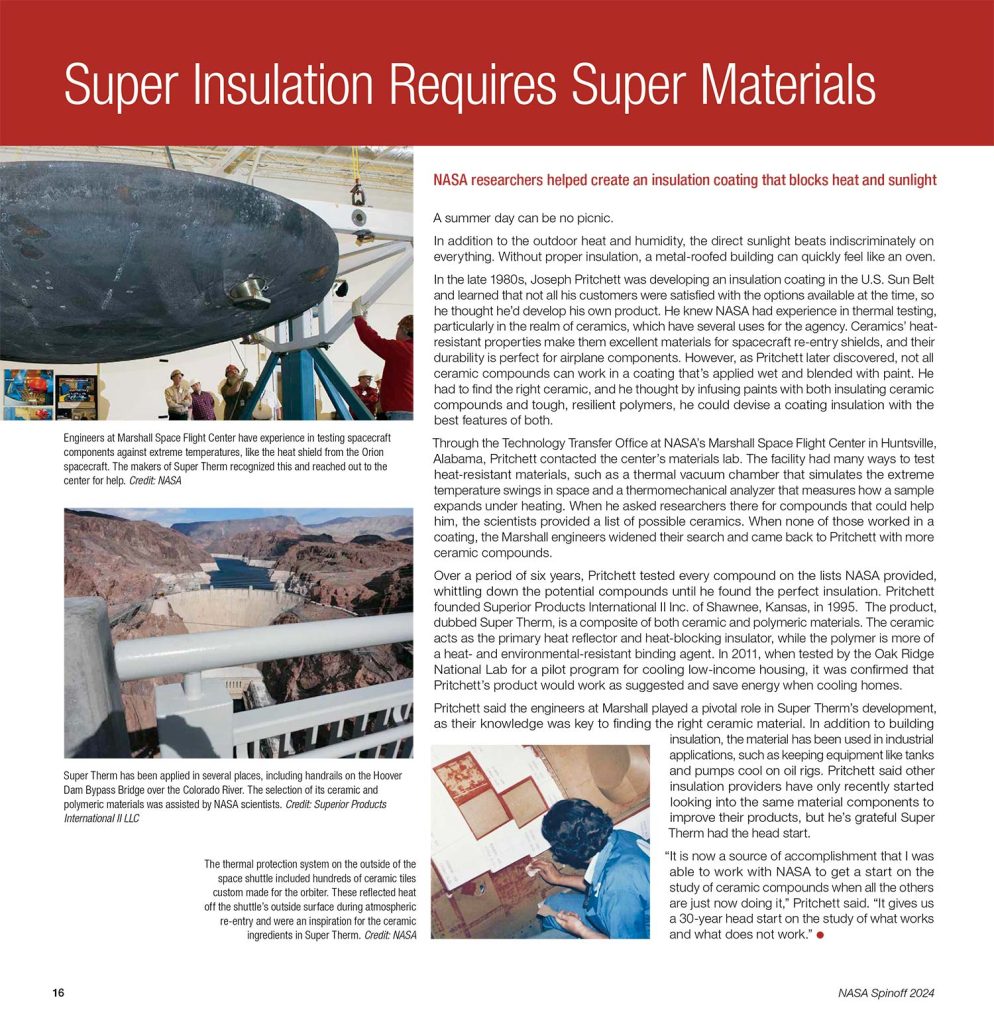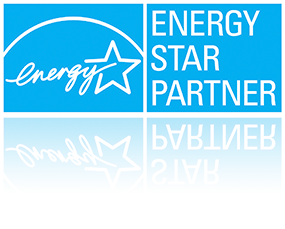NASA’s 2024 Spinoff Magazine with Super Therm®
NASA researchers helped create an insulation coating against heat and sunlight
A summer day can be no picnic.
In addition to the outdoor heat and humidity, the direct sunlight beats indiscriminately on everything. Without proper insulation, a metal-roofed building can quickly feel like an oven.
In the late 1980s, Joseph Pritchett was developing an insulation coating in the U.S. Sun Belt and learned that not all his customers were satisfied with the options available at the time, so he thought he’d develop his own product. He knew NASA had experience in thermal testing, particularly in the realm of ceramics, which have several uses for the agency. Ceramics’ heat resistant properties make them excellent materials for spacecraft re-entry shields, and their durability is perfect for airplane components. However, as Pritchett later discovered, not all ceramic compounds can work in a coating that’s applied wet and blended with paint. He had to find the right ceramic, and he thought by infusing paints with both insulating ceramic compounds and tough, resilient polymers, he could devise a coating insulation with the best features or both.
…not all ceramic compounds can work in a coating that’s applied wet and blended with paint.
Through the Technology Transfer Office at NASA’s Marshall Space Flight Center in Huntsville, Alabama, Pritchett contacted the center’s materials lab. The facility had many ways to test heat-resistant materials, such as a thermal vacuum chamber that simulates the extreme temperature swings in space and a thermomechanical analyzer that measures how a sample expands under heating. When he asked researchers there for compounds that could help him, the scientists provided a list of possible ceramics. When none of those worked in a coating, the Marshall engineers widened their search and came back to Pritchett with more ceramic compounds.
Over a period of six years, Pritchett tested every compound on the lists NASA provided, whittling down the potential compounds until he found the perfect insulation. Pritchett founded Superior Products International II Inc. or Shawnee. Kansas, in 1995. The product, dubbed Super Therm®, is a composite of both ceramic and polymeric materials. The ceramic acts as the primary heat reflector and heat insulation, while the polymer is more of a heat and environmental-resistant binding agent.
In 2011, when tested by the Oak Ridge National Lab for a pilot program for cooling low-income housing, it was confirmed that Pritchett ‘s product would work as suggested and save energy when cooling homes. Pritchett said the engineers at Marshal played a pivotal role in Super Therm®’s development, as their knowledge was key to finding the right ceramic material. In addition to building insulation, the material has been used in industrial applications. such as keeping equipment like tanks and pumps coot on oil rigs. Pritchett said other insulation providers have only recently started looking into the same material components to improve their products, but he’s grateful Super Therm® had the head start.
“It is now a source of accomplishment that I was able to work with NASA to get a start on the study of ceramic compounds when all the others are just now doing it.” Pritchett said. “It gives us a 30-year head start on the study of what works and what does not work.”
Read the NASA article | Full PDF about SPI NASA Journey
SPI NASA Story | NASA Fire Testing Results
